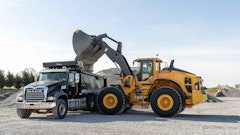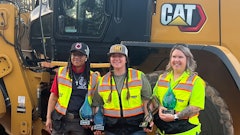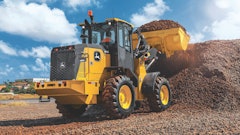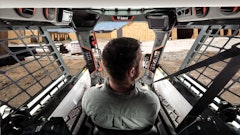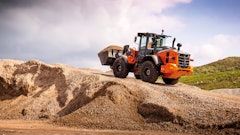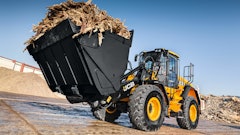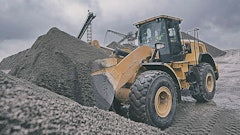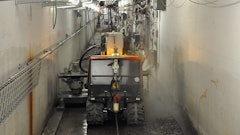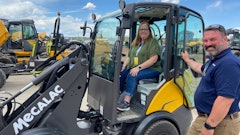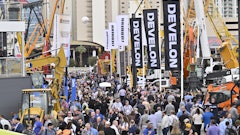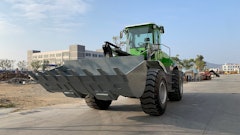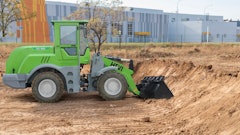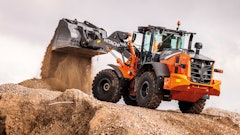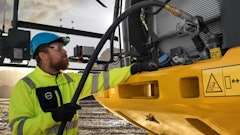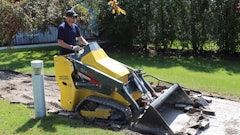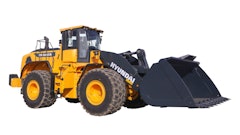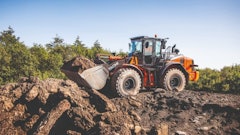
If you want something, don't be afraid to ask. Essentially, many of the features found on today's skid-steer loaders are standard because enough people requested them.
Take cup holders, dome lights, cargo compartments and 12-volt power ports for MP3 players, cell phone chargers and small electrical air pumps, for example. Now typically standard features, they were options just five years ago, and unheard of 10 to 15 years ago. But think how nice they are to have, and how much more comfortable and productive they can make you and/or your operators.
Skid steers have admittedly lagged behind some of the larger construction equipment in availability of ultimate comfort features/options. Wheel loaders and excavators have had enclosed, climate-controlled cabs and cushioned seats for years. But in defense of the smaller loaders, the higher cost of larger earthmovers means added options represent a smaller percentage of total machine cost, making them easier to justify.
Now, operators used to the creature comforts of larger equipment are beginning to want more in their smaller utility machines. "Operators want to have an increasing level of comfort in a skid steer," says Kelly Moore, Gehl. "It's a natural progression because of the familiarity with the larger machines. If you can improve the ergonomics and the comfort level, it makes for more satisfied employees. The machine is less fatiguing to operate, and some options, such as a cab enclosure, give operators the ability to work comfortably for a longer period of time, year round."
Certainly, any skid steer with a seat and aired up tires will get the job done, including "plain jane" models equipped with the standard ROPS/FOPS and rear and top glass. But one with an enclosed cab, climate control and a radio will be more enjoyable to operate.
"We believe that a comfortable operator is a productive operator," says Pierre Verdon, marketing, Caterpillar. "Features such as a comfortable and quiet cab with air conditioning, air-ride seat and good visibility allow the operator to feel less tired, better focused and overall much more productive. Those options will also help contractors retain employees by making them more comfortable on the jobsite."
"Operator comfort is a critical aspect for skid-steer loaders," adds Jim Hughes, Case Construction Equipment. "The options being offered today are being driven by creature comforts in your car and in your home. The days of having a seat and some controls are gone. If you have operators sitting in a machine eight to 10 hours a day, you need to keep them comfortable or they will find something else to do."
Benefits of cozier cabs
Upgrading to even a basic cab enclosure gets you sliding windows, curved glass, frameless doors and more overhead glass, so there's less stress and strain to view what's going on outside the cab. But for those who want more, there's a laundry list of options for "tricking" out a skid steer that includes just about everything but the kitchen sink.
At the top of most operators' wish list is an enclosed cab with heat, defrost and air conditioning. This comfort comes with a cost - typically several thousand dollars. Even a basic cab with sliding windows for ventilation will set you back a couple thousand. But by many accounts, either option pays for itself in a short amount of time.
"An enclosed cab with heat and/or air conditioning helps keep operators comfortable, clean and at the right temperature while working," says Greg Rostberg, marketing manager, Bobcat Co. "[Contractors can work] all day without breaking a sweat, and they can stay warm and dry in a
blizzard."
Gregg Zupancic, John Deere, indicates about half the loaders the company sells go out with a cab option that includes heat/defrost and/or air conditioning. And that number keeps going up, especially in larger models where contractors feel they can better afford to splurge.
"They can operate in all weather conditions," he says. "If it's raining, they can continue to work. The same can be said for working in dusty and snowy environments. Without a cab, they may have to take a day off. Contractors can justify the added expense with more productivity."
Enclosed cabs also offer a cleaner, quieter work environment by minimizing dust and significantly lowering the noise level.
Many manufacturers offer sound-proofing options to further maximize noise reduction. For example, the optional acoustical kit offered by John Deere reduces noise by about 5 dB, which makes it more than 50% quieter than the same skid steer without the kit. The $140 option (list price) includes a better headliner and additional sound reduction materials throughout the cab interior, absorbing noise and more effectively separating the operator from the engine compartment.
In addition to reducing operator stress and fatigue, a quieter cab facilitates use of options such as radios and MP3 players. "Twenty years ago, you didn't need a radio because the machine was too loud to hear it," says Hughes. "Now, technology has progressed to the point where we're able to quiet the machines. Operators want to listen to music. It keeps them going through the day. It goes back to those creature comforts of your home and your car that you want in a loader."
Another increasingly popular creature comfort is the suspension seat, which adjusts to the operator's weight. And for the ultimate in comfort, Case offers a deluxe heated cloth seat with lumbar support, listing at $290. "This option keeps the operator warm from the inside out," says Hughes.
Direct productivity boosters
While cab options such as radios and heated seats offer indirect productivity benefits, others more directly affect the ability to get more work done.
Quick-attach/detach mounting systems - which list in the neighborhood of $1,000 - make switching between attachments as easy as pressing a button in that climate-controlled cab. "Our mounting system is great for contractors who need to switch between attachments several times a day," says Rostberg. "With the flip of a switch, an attachment can be disengaged and a different attachment engaged, making the process quick and easy."
Ride control - which senses the weight in the bucket and smooths the ride - is another easily justified option. In addition to improving material retention, it can reduce operator fatigue so you can get more done in a day, as well as limit shock to the skid-steer structure, coupler, hydraulic system and attachment.
"The loader arms float with a full bucket of dirt," says Hughes. "You don't get front to back porpoising. It's more comfortable for the operator and more productive. When the load stays more level, you keep more dirt in the bucket and you have less spillage."
"The loader arms act like a shock absorber, allowing for higher operating speeds, better material retention and increased operator comfort," adds Verdon.
Low-effort servo and joystick controls also offer direct productivity benefits. Not only can they ease operation, they make it less physically demanding and fatiguing to operate a machine vs. traditional hand and foot controls.
"With the old mechanical controls, you have to move your entire arm up to your shoulder... you have to fully extend your arm and body," says Hughes. "With servo controls, you're just moving your forearm to move the lever. And with pilot controls, all you're moving is your fingertips."
Which options are right for you?
Options like ride control, hydraulic quick couplers, etc. are designed to provide operators with the ability to perform a fast and precise job, sometimes avoiding waste associated with rework. "Increased productivity should allow contractors to generate more revenue," says Verdon.
But it's important to know which options will benefit your operation most. When determining if a specific option is a good fit, one of the most important things to consider is the application the machine will primarily be dedicated to perform. "This will help target the right model with the right configuration and the appropriate options," says Verdon.
To select the right product and options, consider the following factors:
- targeted productivity
- material type and density
- existing equipment
- current and future site conditions
- climate/weather conditions
- potential future applications
Also ask yourself whether an option can lead to a more productive workforce, suggests Rostberg. "Ask if it allows operators to work longer in comfort, or if the option can speed up work," he says. "Answering these questions can help a contractor find the options and features that best fit his or her business and operator needs."
"If you can finish a job faster and be more productive, you can easily equate that in man hours," adds Hughes. "If you can get a job done two to three hours faster because you aren't losing material out of the bucket, or your operator is comfortable so instead of taking breaks he's able to work all day, options can pay for themselves relatively quickly."
Operator safety should also be factored into the equation. "A cab will protect them from the elements and from debris," Verdon points out. "Excellent visibility, a horn, rear-view mirror and backup alarm will help prevent accidents on the jobsite. This will also help protect some of the machine's key components, such as tires.
"Those options will help contractors protect their employees and assets," he adds, "ultimately, making operators safer and helping [contractors] to reduce operating costs."







